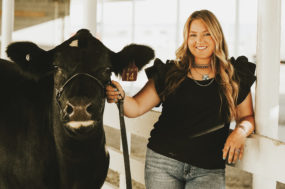The Secret Life of Groceries (authored by Benjamin Lorr) states that the average grocery store has 32,000 individuated products known as shop-keeping units (SKUs). The largest stores have 120,000 SKUs (and many more waiting to get on those shelves). With product packed in to maximize shelf space, the shopkeeper has to ask: Which SKUs are in highest demand and which have the highest profit?
When it comes to sales per foot for all chain stores in San Francisco, at the top of the chain is the Apple Store (our technological pusher), Tiffany’s (selling jewels to newlyweds), and then there is Trader Joe’s – a grocery store.
So how did Trader Joe’s make that prestigious list, with many items priced under $5 (compared to the thousand-dollar items of the other stores)? Joe tried different products and tracked SKUs religiously. He found health food fanatics were the exact same demographic group that made up the wine connoisseurs – both were rejecting the generic products of the masses (like Folgers coffee), both had an internal need to assert individuality, and both craved information. (And as an aside, they also loved bran, which is low-profit and takes up high volume on the shelf – but to offset that, Joe brought in nuts to pay for the bran space.)
But Joe wasn’t there – yet. From nuts, Joe moved to vitamins – another perfect high-value-per-cubic-inch product. But along the way he had failures innumerable – low-salt TV dinners that tasted like cardboard, a “peel in” applesauce, bottled raw carrot juice. (If you haven’t seen those products, keep in mind that just over 20,000 new products hit the shelf each year, and 89% fail within 18 months.)
Trader Joe’s story is ag’s story. Does this sound familiar: What? The soil is blowing away? Let’s set up soil districts to fix that. What? The equipment we use takes too much diesel? Let’s fix that. What? There’s not enough water for irrigators and utility companies to meet demand? Let’s work on that.
These were (and continue to be) handled through collaboration, technology, legislation and adjudication. It’s expensive. For the most part, we hit consistent base hits and not home runs, but we stay in the game.
We could name another million problems ag faces today: labor, transportation, inflation, privacy laws, subsidies, insurance, marketing, open range laws, water rights and infrastructure. But farmers, ranchers and dairy producers all have “Trader Joe” mentality, which is: Let’s try some things and figure it out.
As most commodity commissions and organizations delivered their summaries for memberships the past few months at annual industry events, I’m always impressed by the amount of drive, specificity, expertise, money, research, education and passion collectively invested into this industry. It’s not perfect – we haven’t hit any home runs lately, but we’re working on it. We’re just not there – yet. ![]()



.jpg?t=1687979285&width=640)


